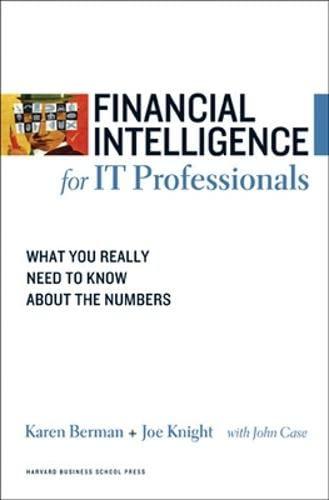Answered step by step
Verified Expert Solution
Question
1 Approved Answer
A put option in finance allows you to sell a share of stock at a given price in the future. There are different types of
A put option in finance allows you to sell a share of stock at a given price in the future. There are different types of put options. A European put option allows you to sell a share of stock at a given price, called the exercise price, at a particular point in time after the purchase of the option. For example, suppose you purchase a sixmonth European put option for a share of stock with an exercise price of $ If six months later, the stock price per share is $ or more, the option has no value. If in six months the stock price is lower than $ per share, then you can purchase the stock and immediately sell it at the higher exercise price of $ If the price per share in six months is $ you can purchase a share of the stock for $ and then use the put option to immediately sell the share for $ Your profit would be the difference, $ $ $ per share, less the cost of the option. If you paid $ per put option, then your profit would be $ $ $ per share.Managerial Report Build a spreadsheet model to calculate the profit of this European put option. Hint: Follow the above to create the parameters and the formulas for Model Construct a data table that shows the profit per share for a share price in six months between $ and $ per share in increments of $The point of purchasing a European option is to limit the risk of a decrease in the pershare price of the stock. Suppose you purchased shares of the stock at $ per share and sixmonth European put options with an exercise price of $ Each put option costs $ Build a spreadsheet model to show the value of the portfolio with options and without options. Hint: Follow the above to create the parameters and the formulas for Model Use data tables to shows the value of the portfolio with options and without options for a share price in six months between $ and $ per share in increments of $ Discuss the portfolio profit with and without the European put options. Which one with or without is more profitable? Your submission of report should be a MS Excel file showing formulas.
A put option in finance allows you to sell a share of stock at a given price in the future. There are different types of put options. A European put option allows you to sell a share of stock at a given price, called the exercise price, at a particular point in time after the purchase of the option. For example, suppose you purchase a sixmonth European put option for a share of stock with an exercise price of $ If six months later, the stock price per share is $ or more, the option has no value. If in six months the stock price is lower than $ per share, then you can purchase the stock and immediately sell it at the higher exercise price of $ If the price per share in six months is $ you can purchase a share of the stock for $ and then use the put option to immediately sell the share for $ Your profit would be the difference, $$$ per share, less the cost of the option. If you paid $ per put option, then your profit would be $ $$ per share.
tableAABEuropean Put Option,Parameters,Costs of Put Option,$

Step by Step Solution
There are 3 Steps involved in it
Step: 1

Get Instant Access to Expert-Tailored Solutions
See step-by-step solutions with expert insights and AI powered tools for academic success
Step: 2

Step: 3

Ace Your Homework with AI
Get the answers you need in no time with our AI-driven, step-by-step assistance
Get Started


